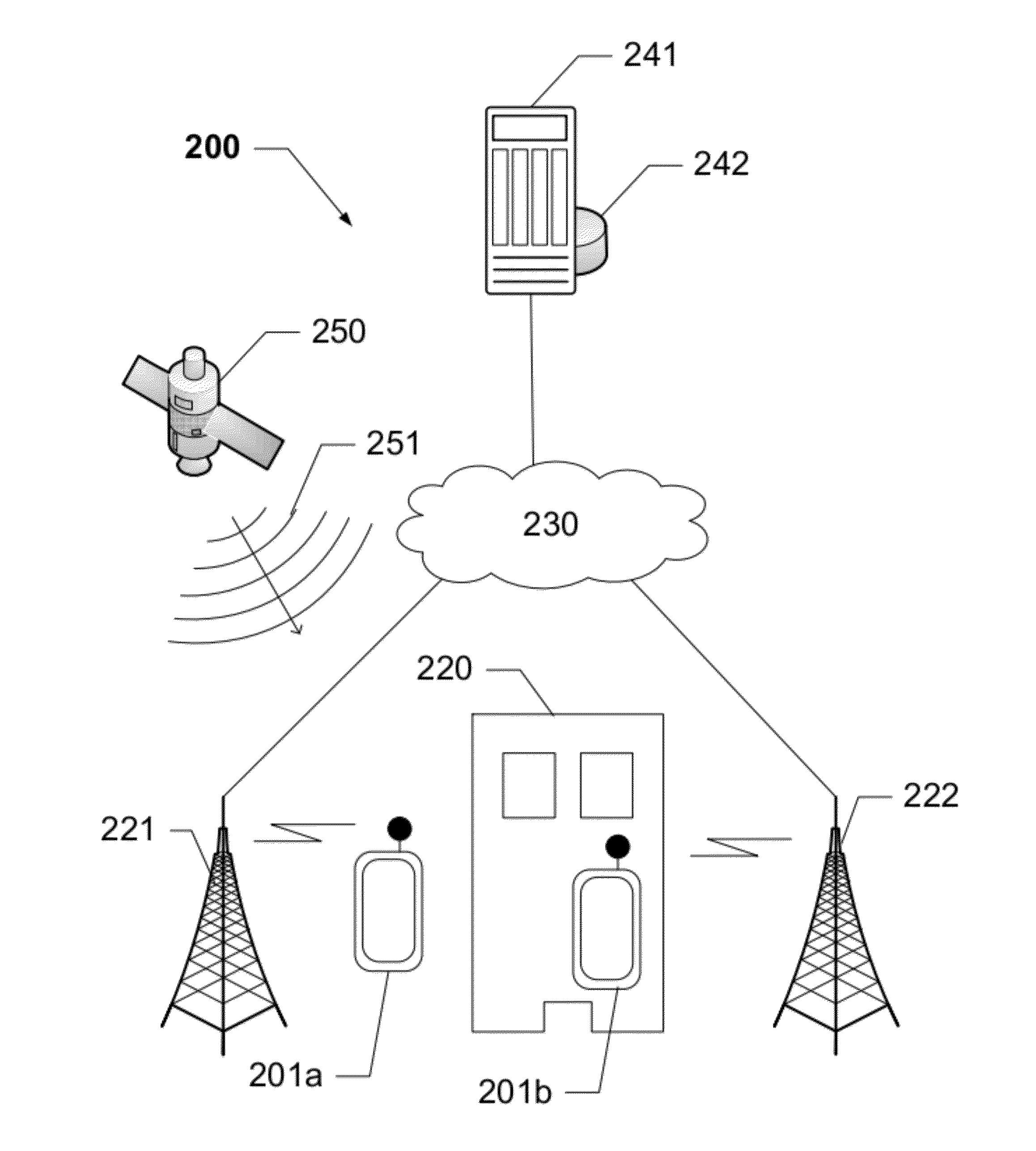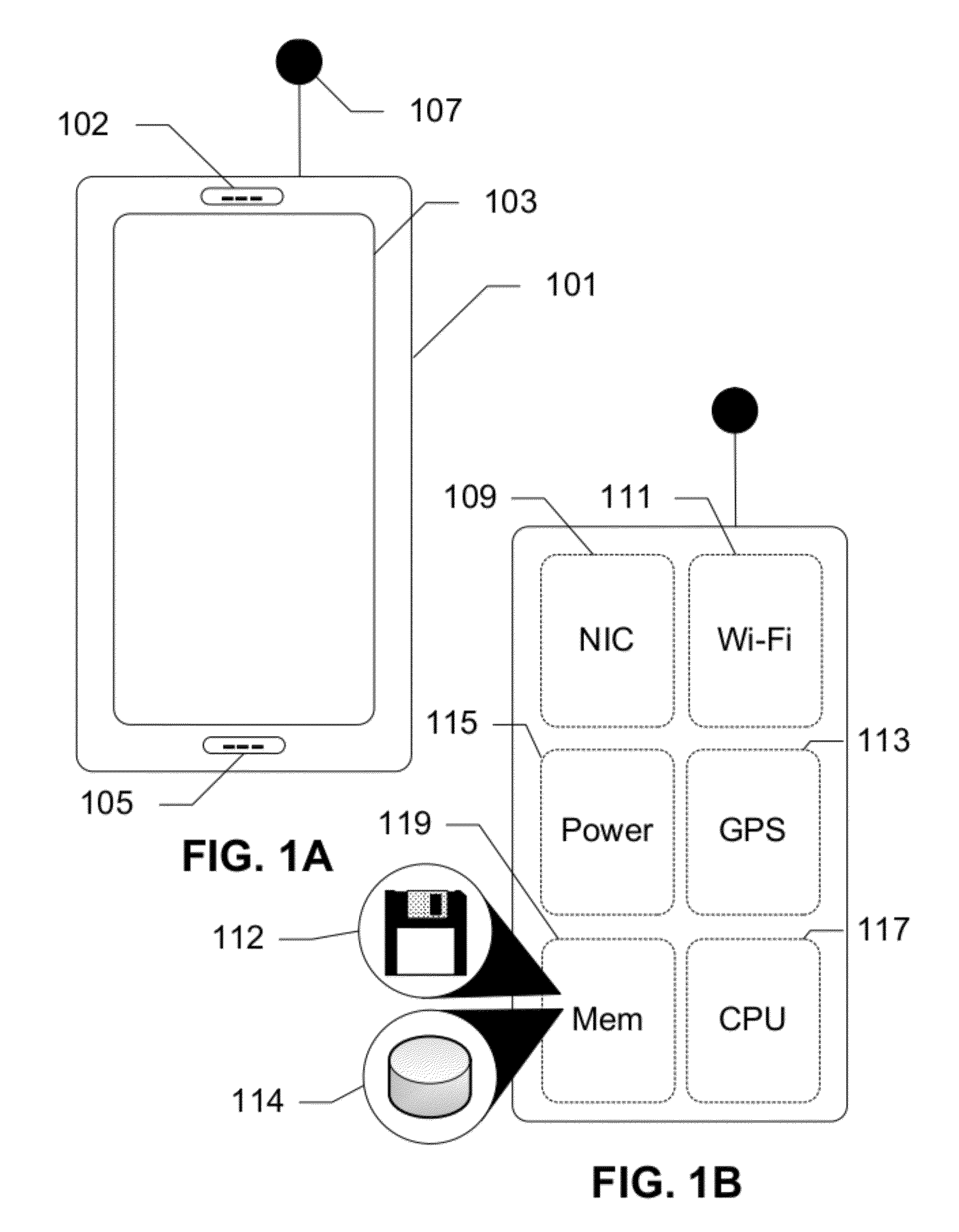Location Estimation of a Mobile Device in a UMTS Network
a mobile device and network technology, applied in the field of mobile communication systems, can solve the problems of limiting agps locates to mobiles, increasing the complexity of mobile devices, and not always receiving satellite signals from gps receivers
- Summary
- Abstract
- Description
- Claims
- Application Information
AI Technical Summary
Benefits of technology
Problems solved by technology
Method used
Image
Examples
Embodiment Construction
[0016]The present invention provides devices, systems, and methods to utilize relative timing offset information reported by one or more mobile devices. When coupled with AGPS information reported by one or more mobile devices, the offset information is be used to calibrate calculations and subsequently to locate all 3G mobiles with GPS-like accuracy, whether or not a GPS receiver is available on said mobile device being located. A similar approach is used in the NELOS (Network Event LOcation System), described in commonly-owned U.S. patent application Ser. No. 12 / 712,424 (the NELOS patent). Briefly, signal path compensation is effected through determination of a propagation delay between one or more cell sites and a mobile device. Such determination is based, at least in part, on statistical analysis of the location of mobile devices throughout a coverage sector or cell. Known information about the base stations is used to calibrate unknown information such as a timing offset, to i...
PUM
 Login to View More
Login to View More Abstract
Description
Claims
Application Information
 Login to View More
Login to View More - R&D
- Intellectual Property
- Life Sciences
- Materials
- Tech Scout
- Unparalleled Data Quality
- Higher Quality Content
- 60% Fewer Hallucinations
Browse by: Latest US Patents, China's latest patents, Technical Efficacy Thesaurus, Application Domain, Technology Topic, Popular Technical Reports.
© 2025 PatSnap. All rights reserved.Legal|Privacy policy|Modern Slavery Act Transparency Statement|Sitemap|About US| Contact US: help@patsnap.com



